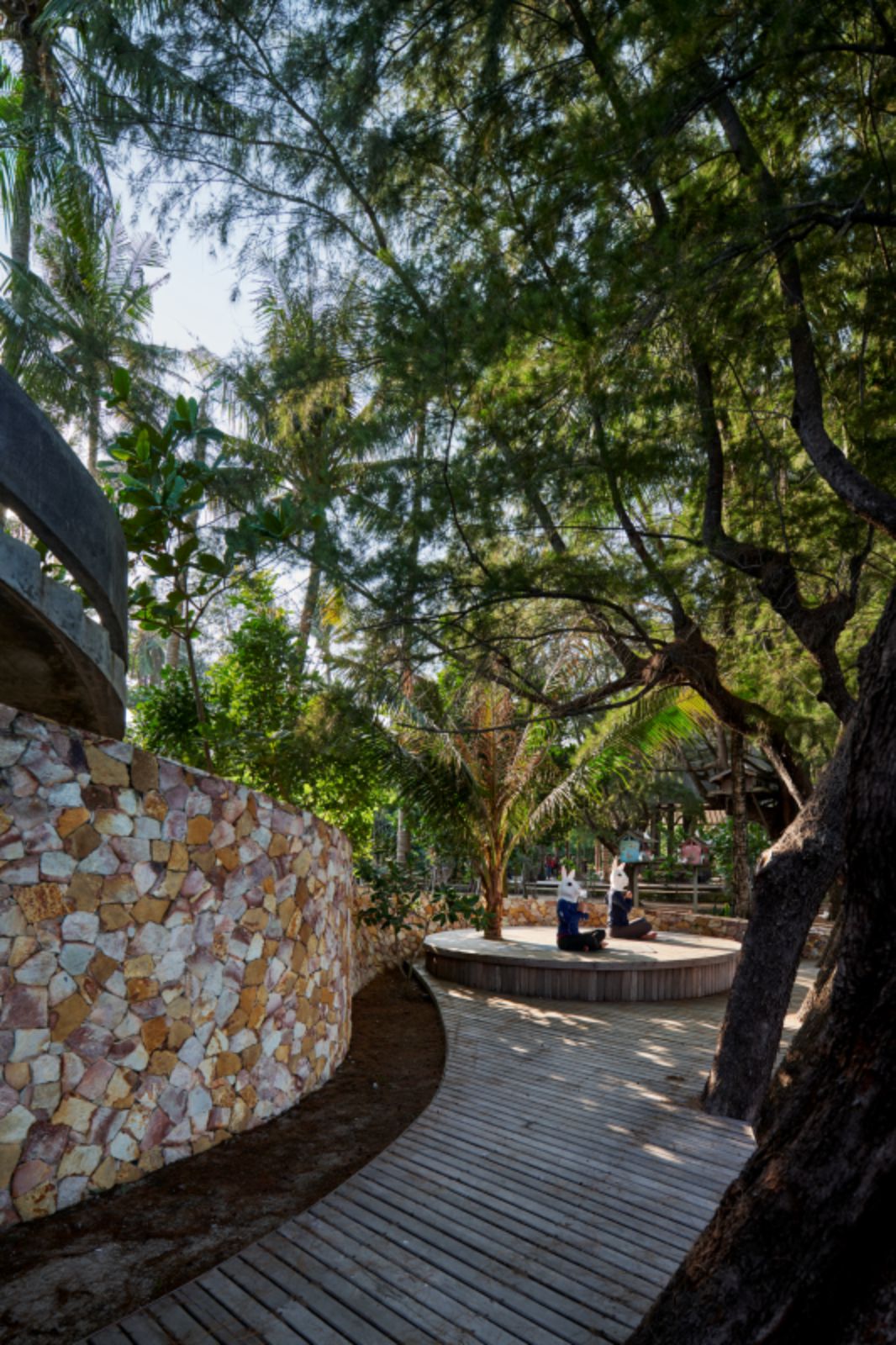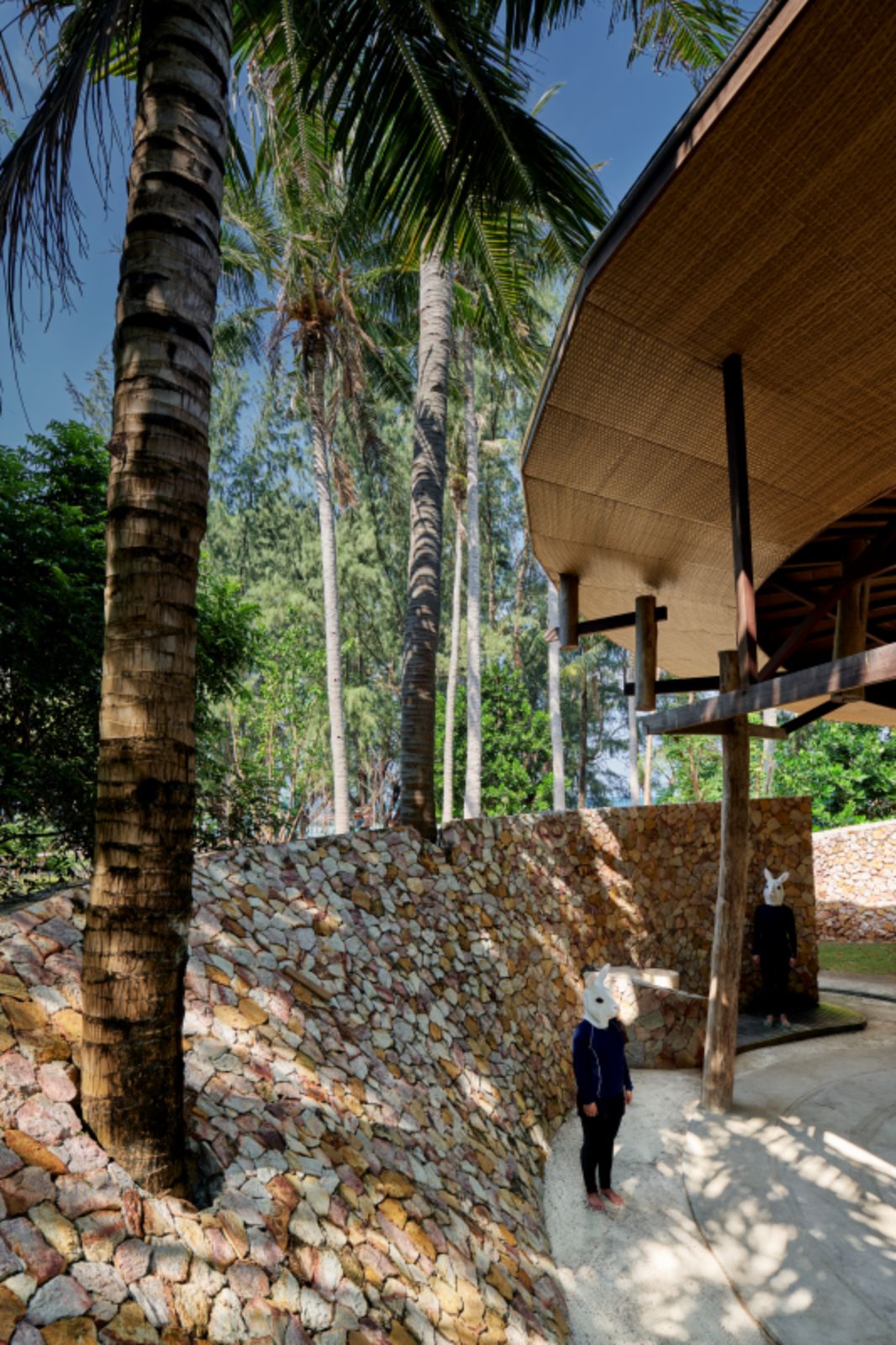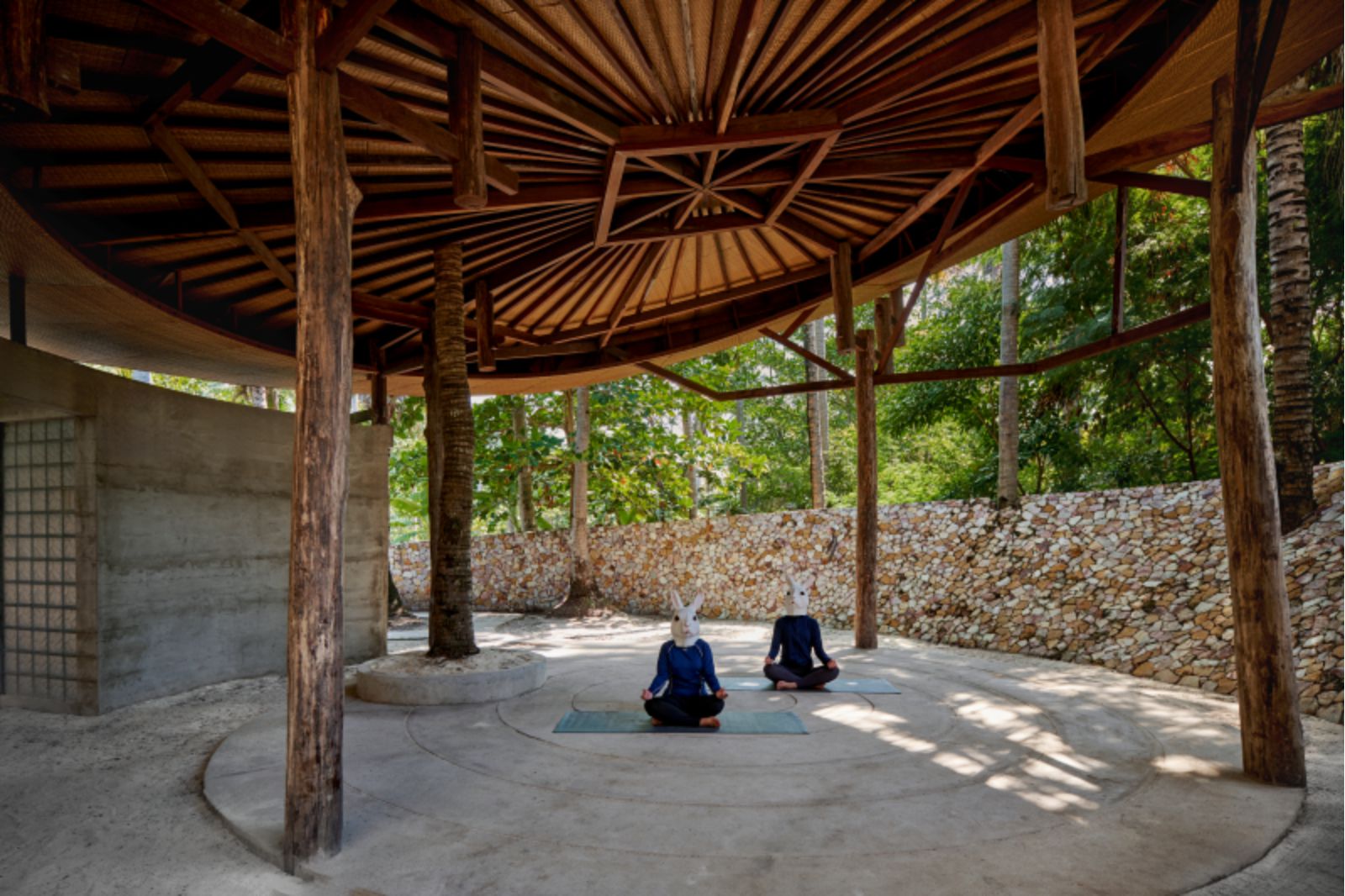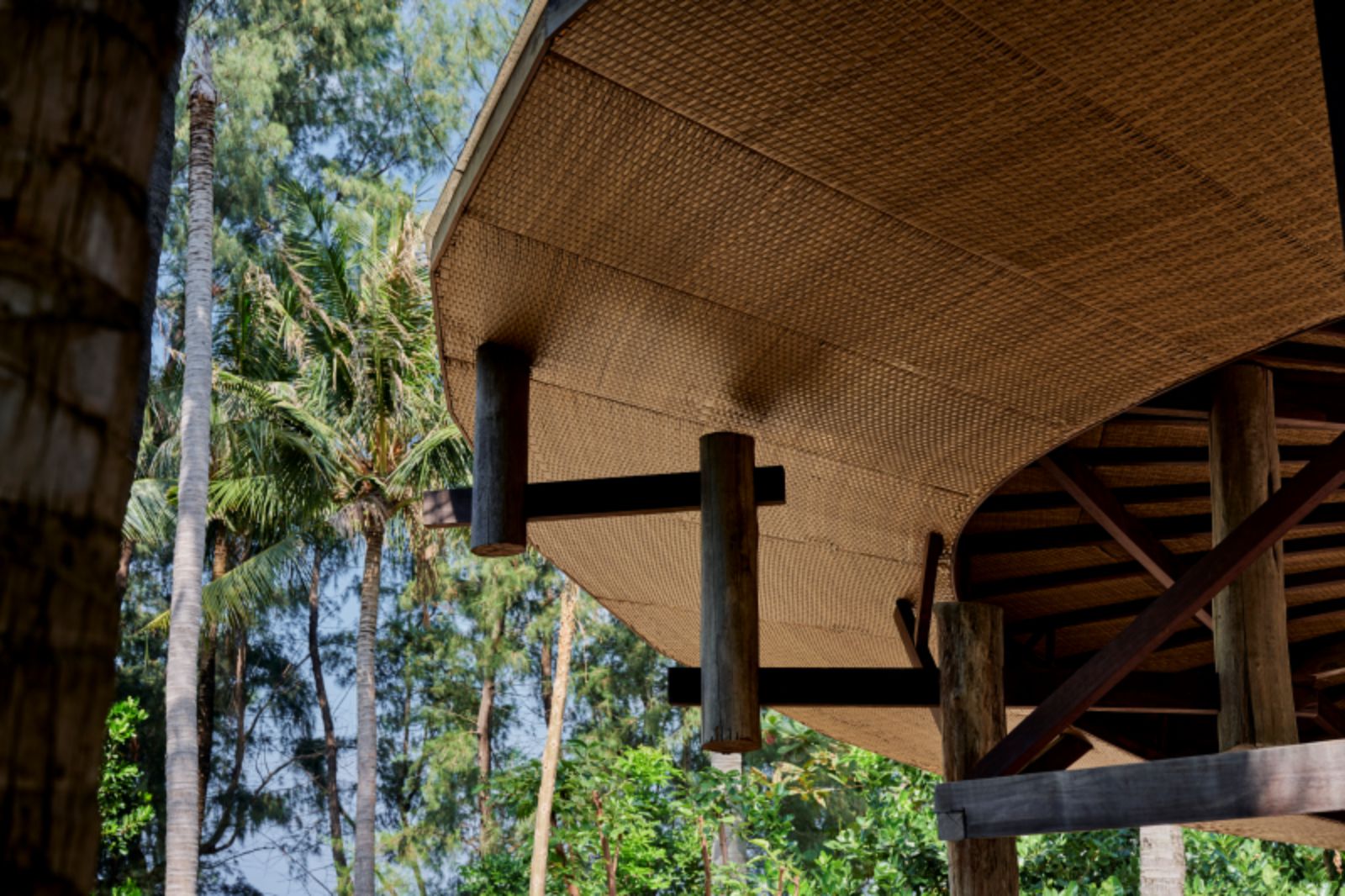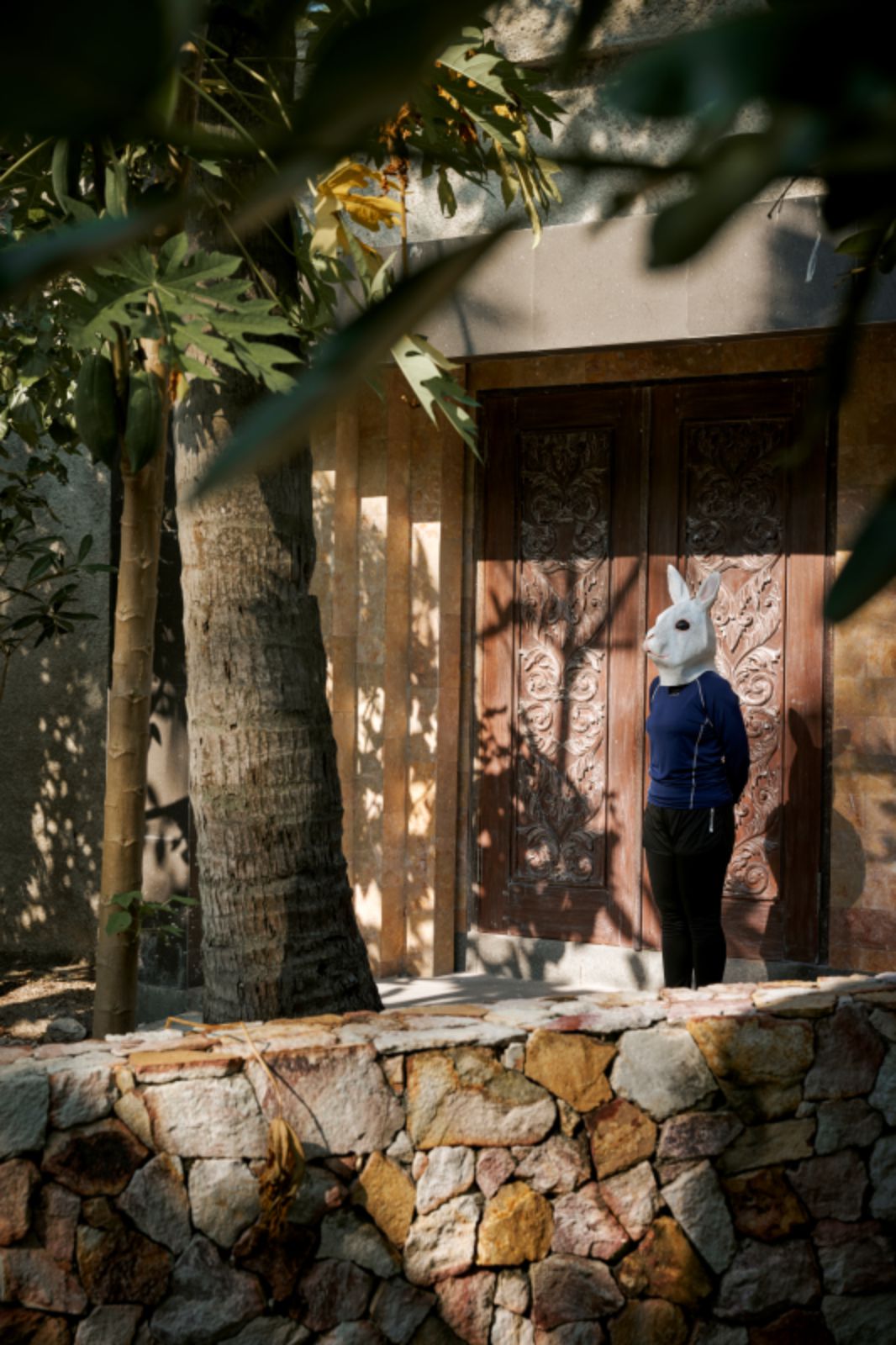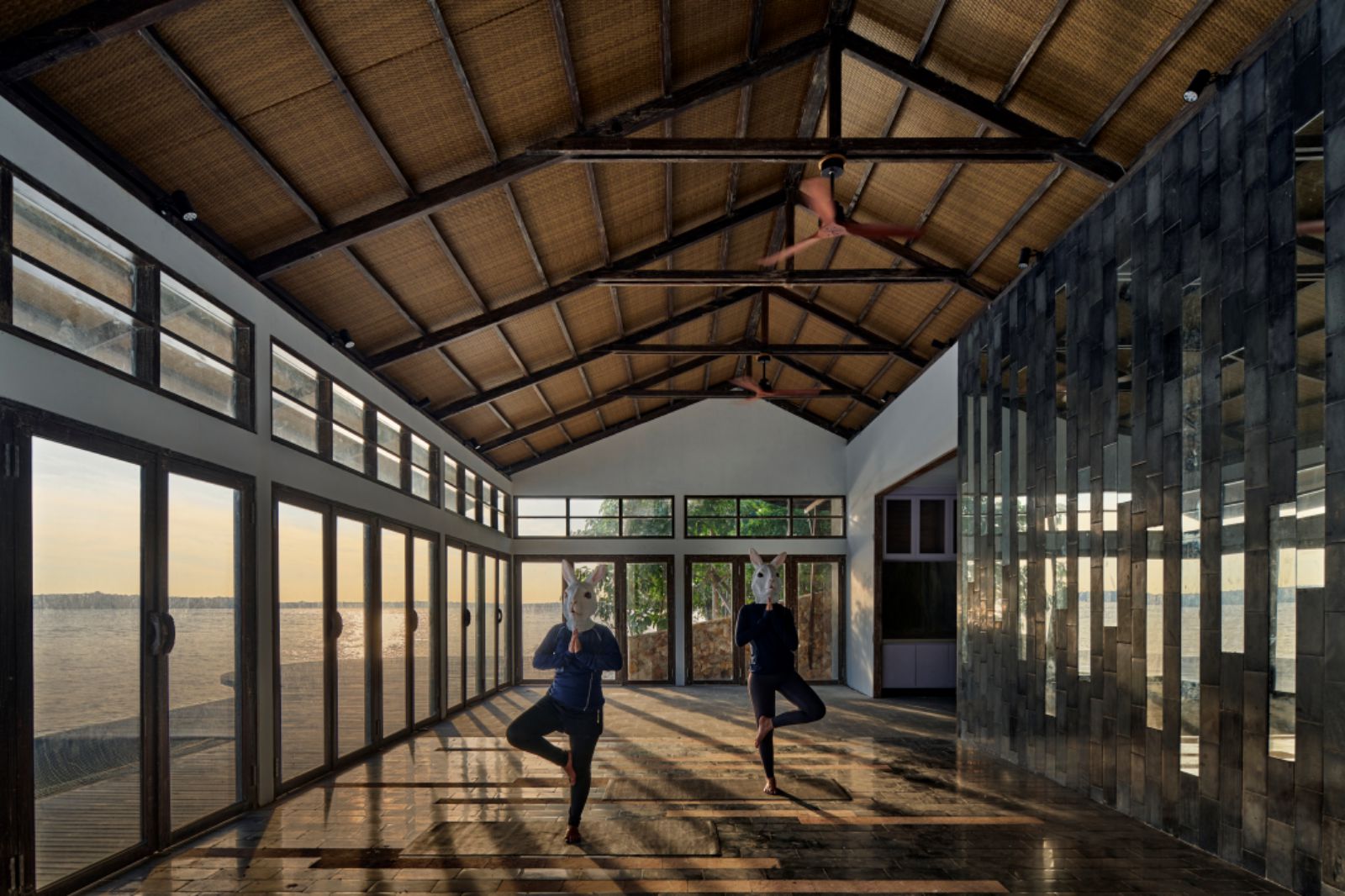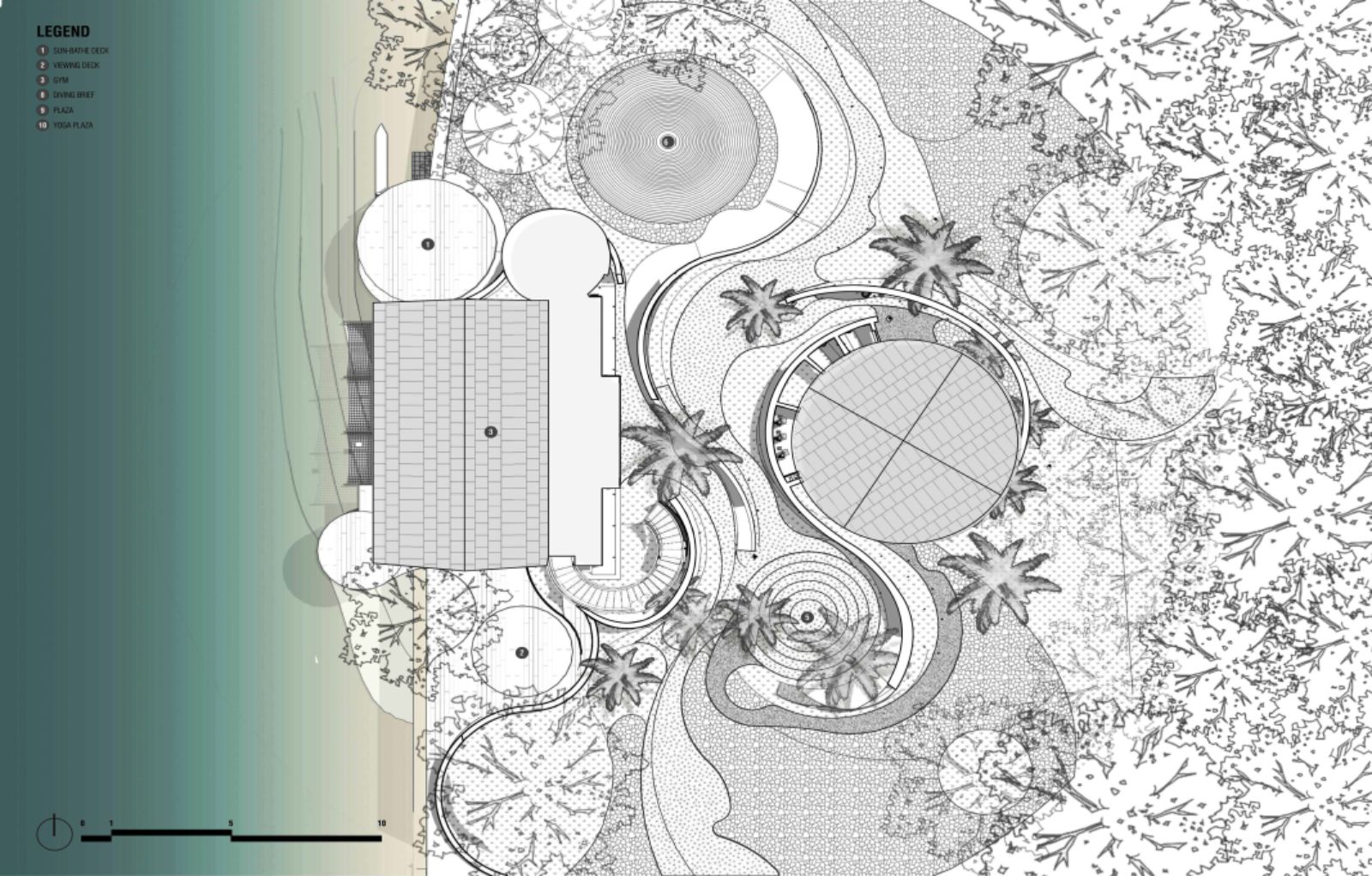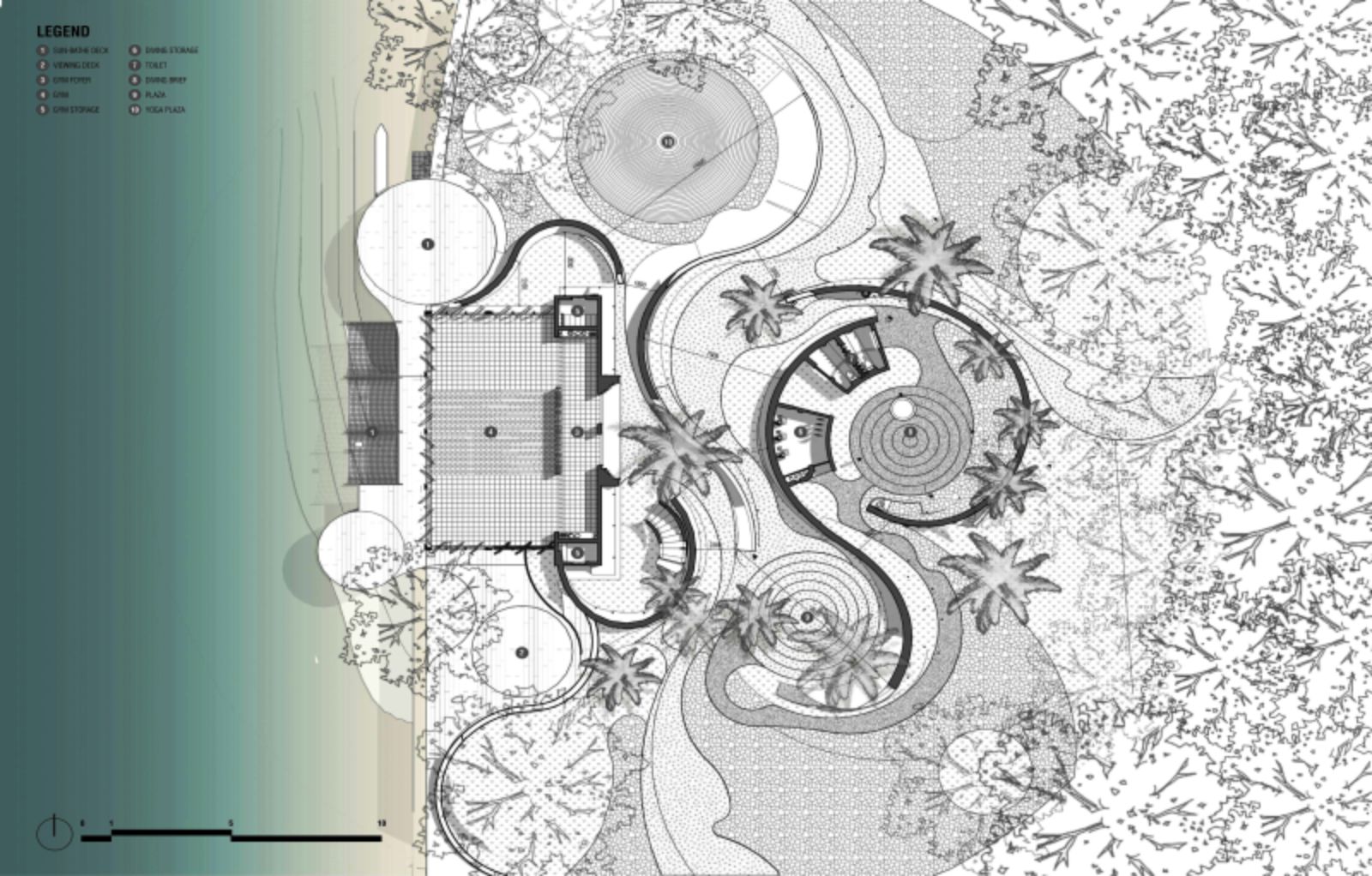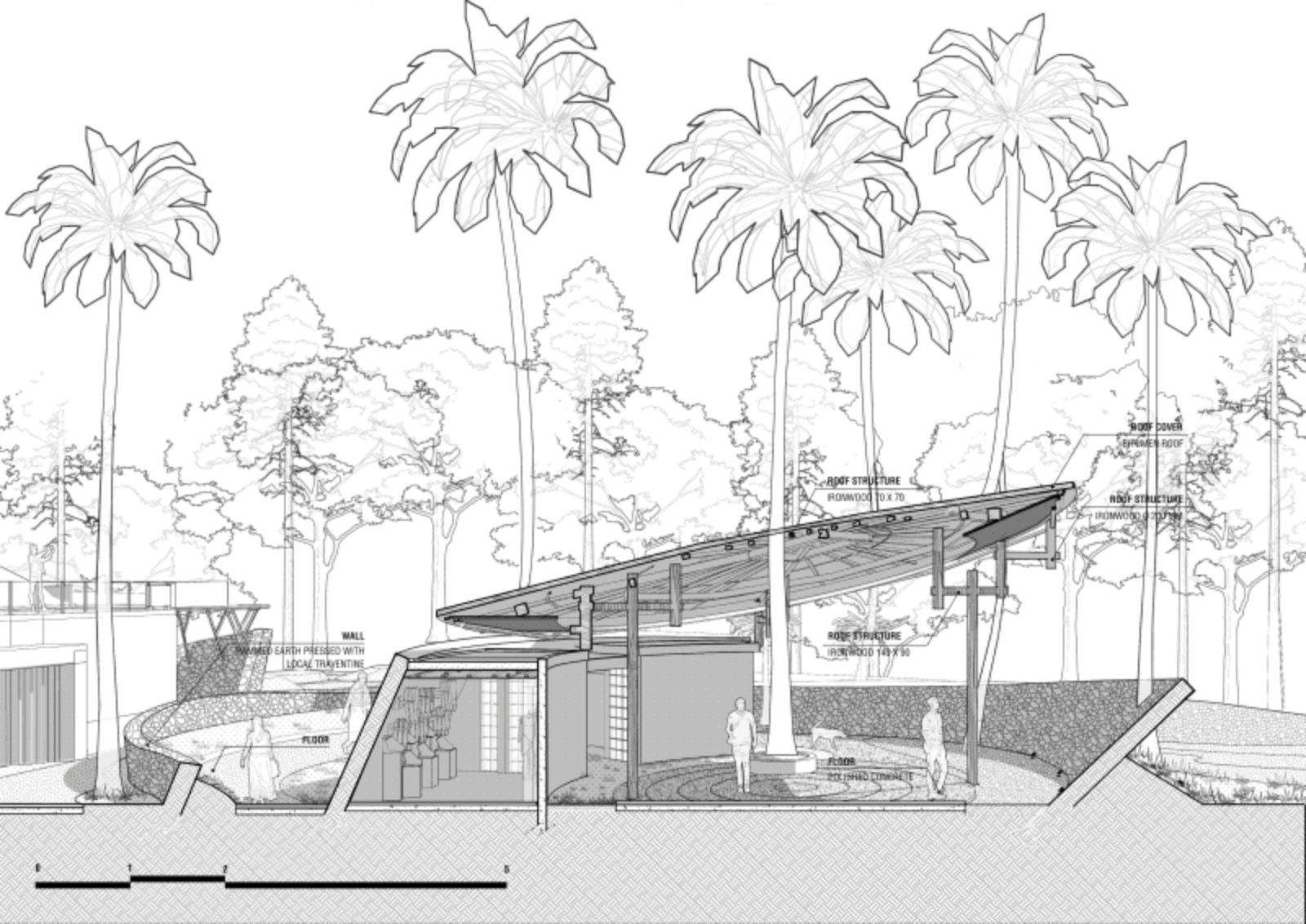Coconut Wellness Garden’s mission was to create a unique yoga center that evokes feelings and experiences while adhering to the standards of equitable use. The site stands out with its serene and natural material palette, characterized by the simplicity and elegance of minimalist construction techniques.
To provide users with an unforgettable tactile experience, materials that reflect the aesthetics and vibes of the island, such as reinforced in-situ rammed earth, timber, and locally sourced natural limestone, were used in unconventional ways to complement the serene beauty of the existing landscape.
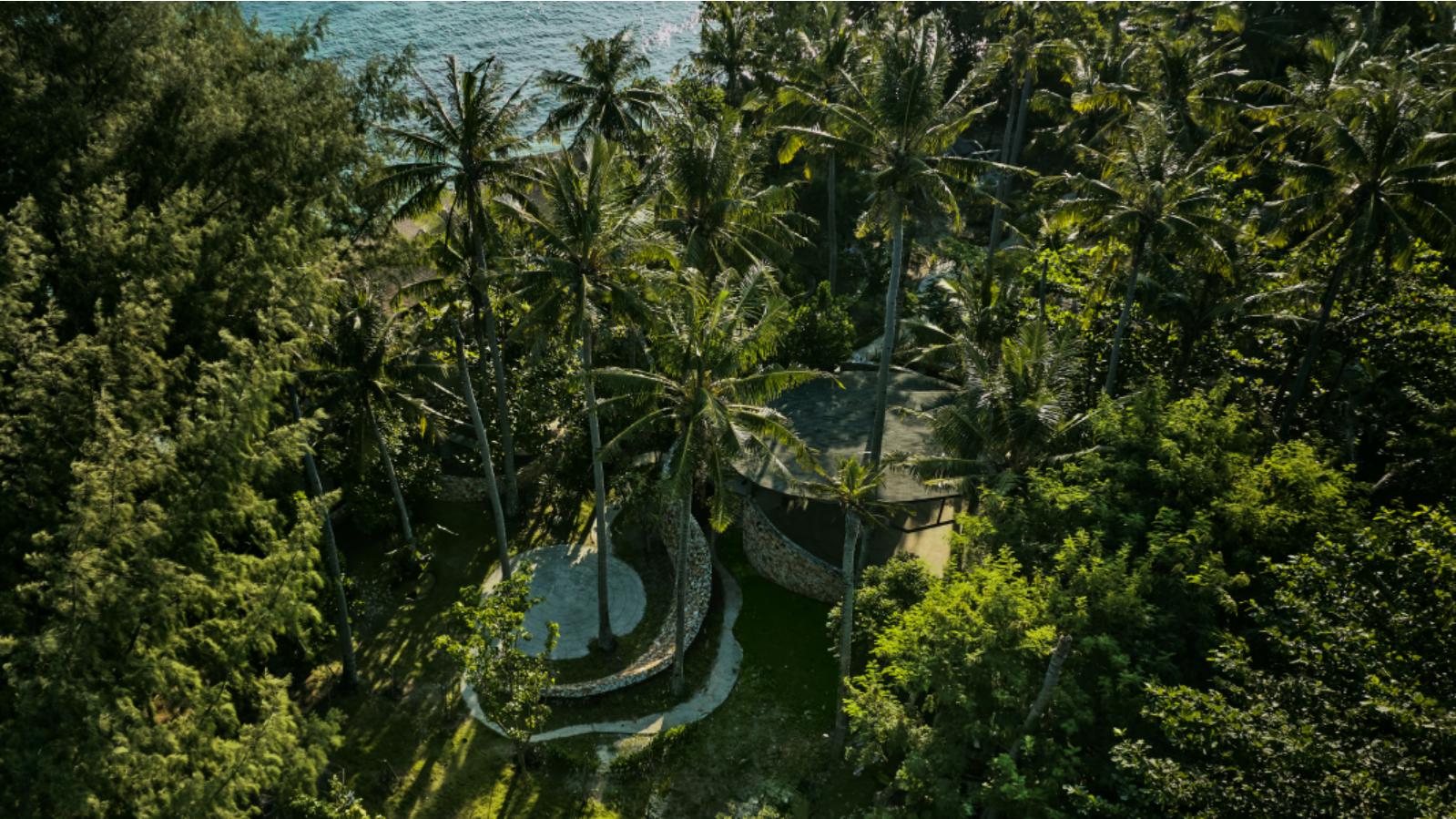
Located on a private island in Karimun Jawa, the garden is designed to be a pristine destination that prioritizes the authenticity of spaces crafted by nature over any heavily constructed architecture. The island will later offer a diverse range of high-quality services, making it an ideal place for relaxation and rejuvenation.
The yoga garden is one of the amenities that enhances the natural scenery, with sunlight creating a constant play of shadows on the carefully crafted natural stone surfaces. From the exterior, the interplay of light and shadow on the circular building creates a nuanced, uniform, and ever-changing experience for visitors.
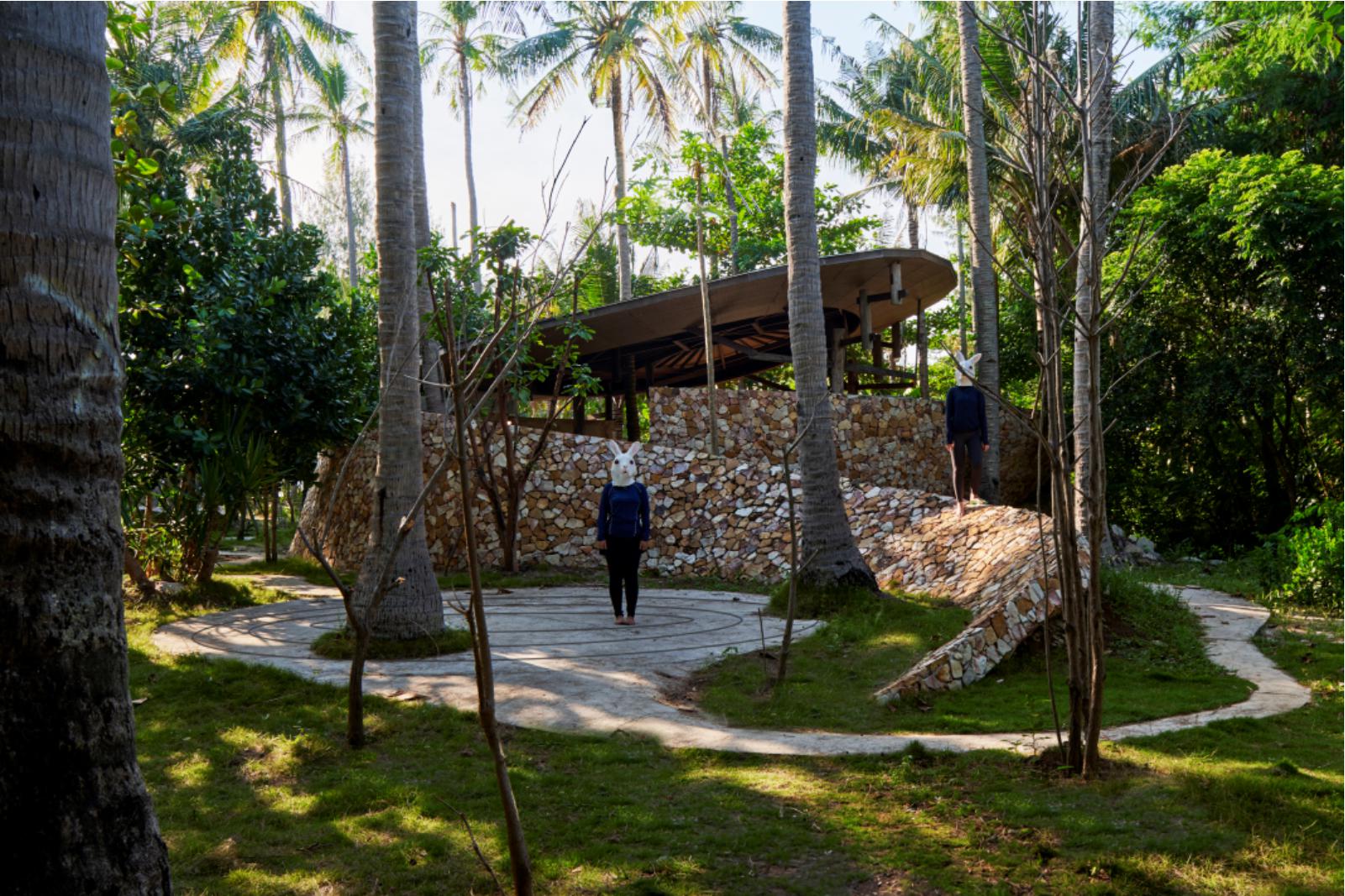
The fluid exterior and interior walls were necessitated by the distinctly organic and heterogeneous coconut trees of the existing space. A relaxed arrangement of interior partitions envelops and conceals all irregularities, forming a fluid space that seamlessly connects with nature.
The limestone-reinforced rammed earth walls transition physically to the exterior and optically divide the garden into four sections: the yoga plaza, the gym area, the indoor diving classroom, and the sunset deck. The centrally asymmetrical, symmetrical circular plane is well-suited for the meditation space. The circulation of visitors is a key consideration for the internal organization of the wellness hall.
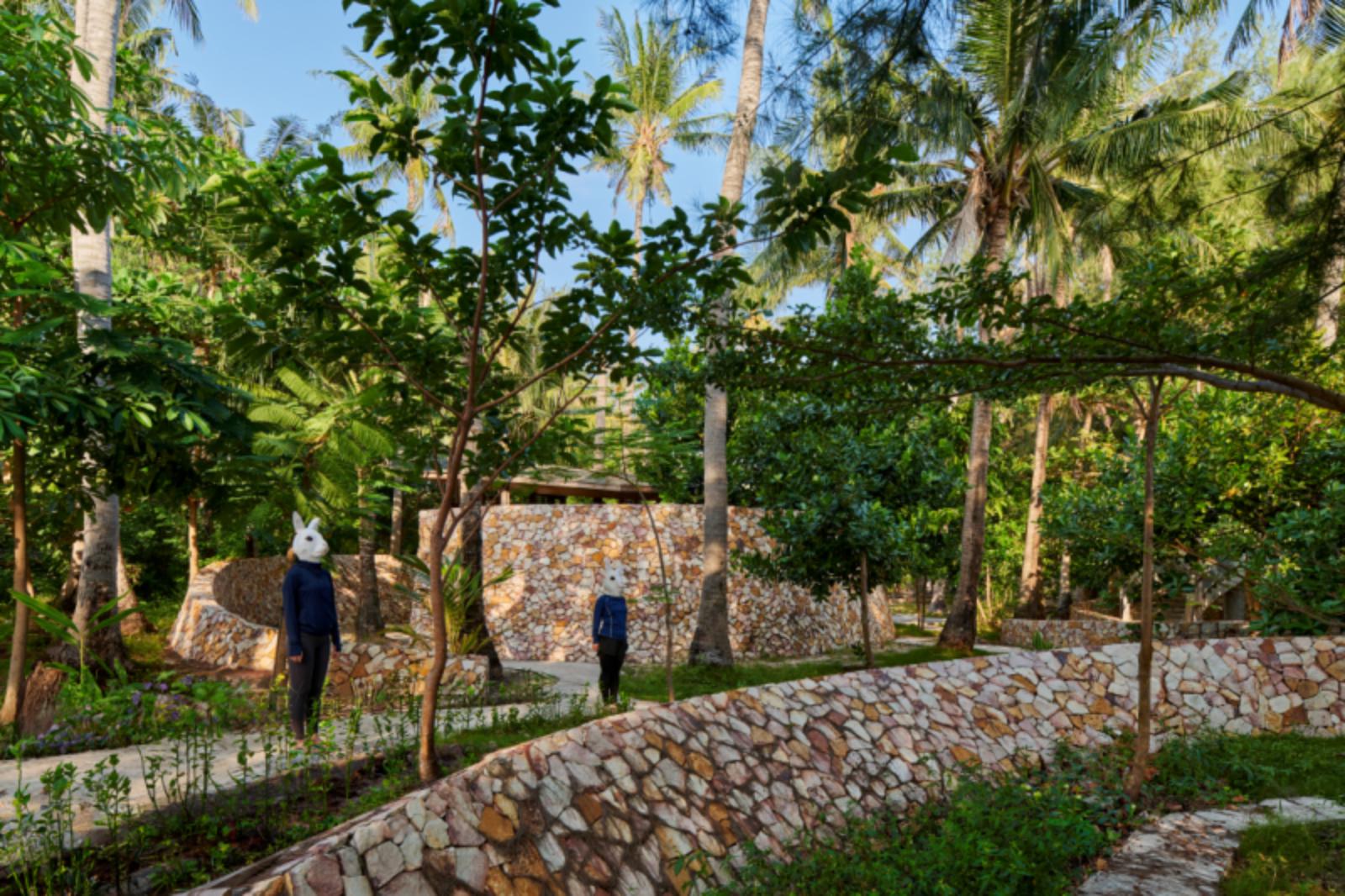
It is essential to ensure a logically arranged circulation route to avoid overlaps or detours. The project features a nearly circular plane, forming inscribed waving walls that create a circle with a diameter of 30 meters. The periphery of this inscribed circle serves as the circulation route for visitors. Such a layout strategy effectively creates privacy without sacrificing outdoor experiences.
The interior walls transform into an angled seating configuration to accommodate large audiences for wellness lectures, if needed. Inspired by traditional construction wisdom, the project utilizes local trees to create stacked large-section columns that support an 8-meter diagonal roof cantilever. These columns are arranged both vertically and horizontally to secure secondary small wooden beams.

Wrapped in wood shingles for the roof and featuring a rattan ceiling, the oval floating roof tilts to the east, allowing morning natural light to penetrate for yogis and divers as they start their day. The sustainable concept inherent in traditional wooden construction is noteworthy.
Since the site is located on a private island, it is crucial to minimize any imported materials transported by boat, as this would result in a high carbon footprint. This principle is specifically embodied by the idea of architecture acting as both furniture and structure.
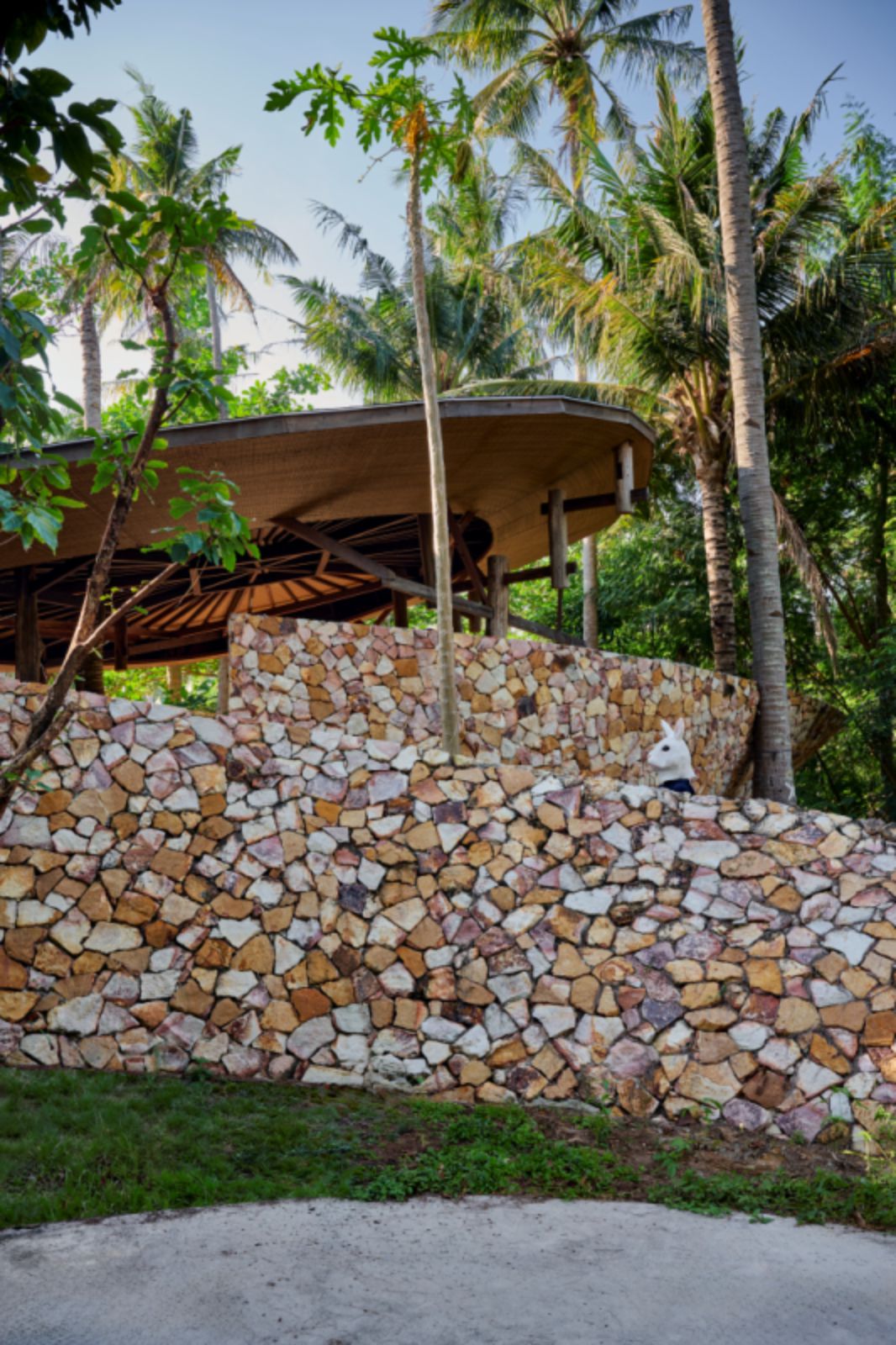
An illustrative example is the use of local earth and stones to form the walls, alongside treated coconut timber serving as the independent foundation for the roof. These constructions utilize local timber frames as the structural system, where columns are carved with mortises for inserting small wooden beams, above which divider panels are placed.
This practice reflects local construction wisdom and resonates with the ethos of resource conservation. It not only saves materials and space but also integrates structure, furniture, and space into a cohesive whole. Source by RAD+ar.

- Location: Karimun Jawa, Indonesia
- Architect: RAD+ar
- Lead Architects: Antonius Richard Rusli
- Program / Use / Building Function: Public Space / Wellness
- Gross Built Area (m2/ ft2): 1000 sqm
- Completion Year: 2024
- Photographs: William Sutanto, Courtesy of RAD+ar
